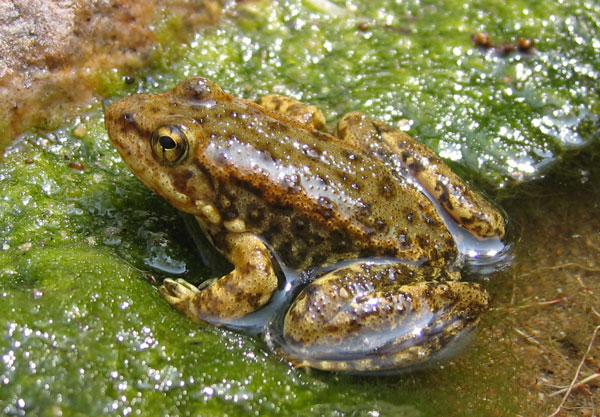The mountain yellow-legged frog (Rana muscosa) a frog that was once abundant in high altitude streams and lakes of the Sierra Nevada and Southern Cali
The mountain yellow-legged frog (Rana muscosa) a frog that was once abundant in high altitude streams and lakes of the Sierra Nevada and Southern California is finally going to get a recovery plan developed for it by the U.S. Fish and Wildlife Service. The plan is expected to be implemented by December 2018.
Read More
Mountain Yellow-Legged Frog Recovery Effort Experiences Challenges
Mountain and Sierra Yellow Legged Frogs Added to Endangered Species List
Mountain Yellow-Legged Frogs Breeding Again In California's San Gabriel Mountains
The frog, which has suffered declines due to the chytrid fungus, decades of high-altitude planting of non-native trout in lakes in the Sierra Nevada mountains, as well as livestock grazing and pesticide drift, once numbered less than 100 in the wild. It was listed as an endangered species in Southern California by the USFWS in April 2014 and has been the subject of captive breeding and release programs in areas in which they were once known to inhabit.

ADAM BACKLIN, USGS
The mountain yellow-legged frog will get a recovery plan by December 2018.
The mountain yellow-legged frog is around three inches in length and lives in high elevation lakes, ponds, streams, and pools of water in California. It hibernates in the winter months. The frog lays eggs in the spring and the tadpoles arrive approximately two months later and remain as tadpoles throughout the summer, winter, and following spring. They then start to metamorphose into frogs the following summer and fall. As adults, they can live 10-15 years.



